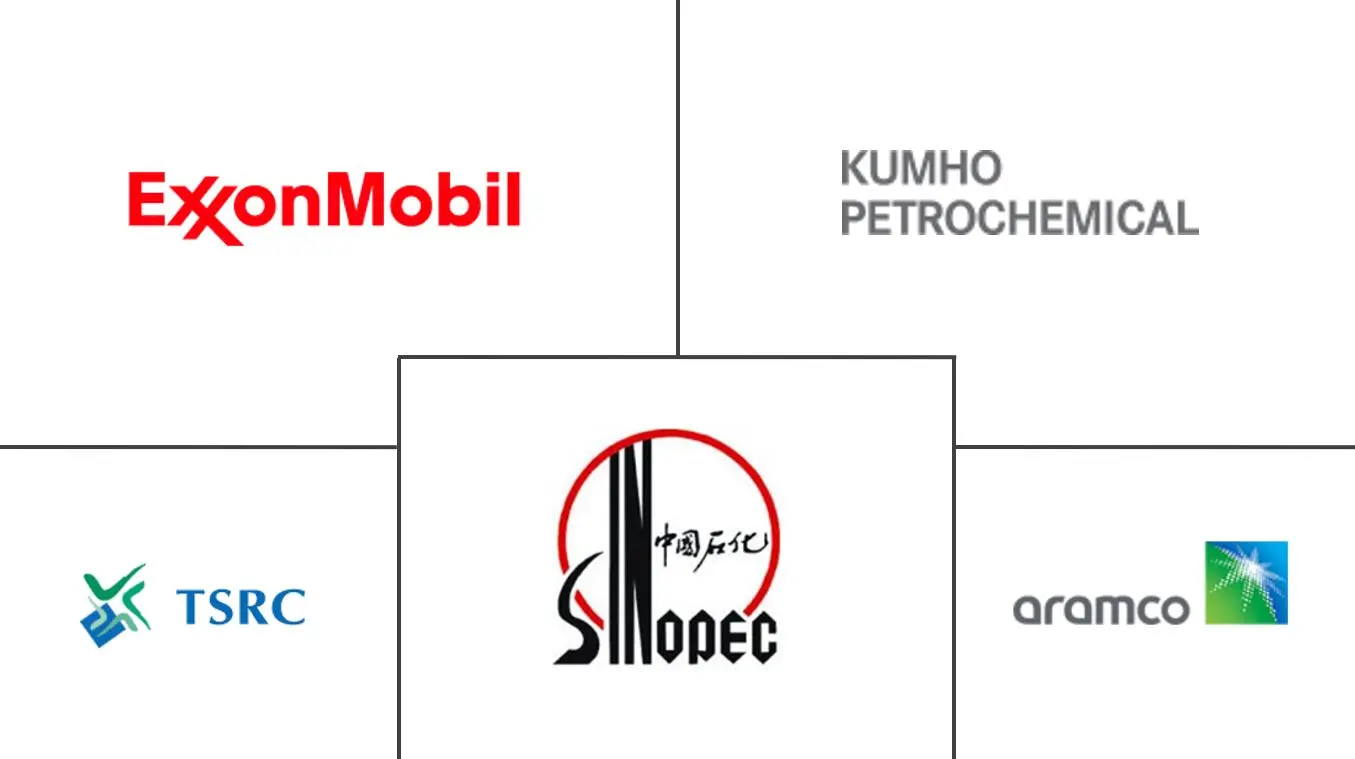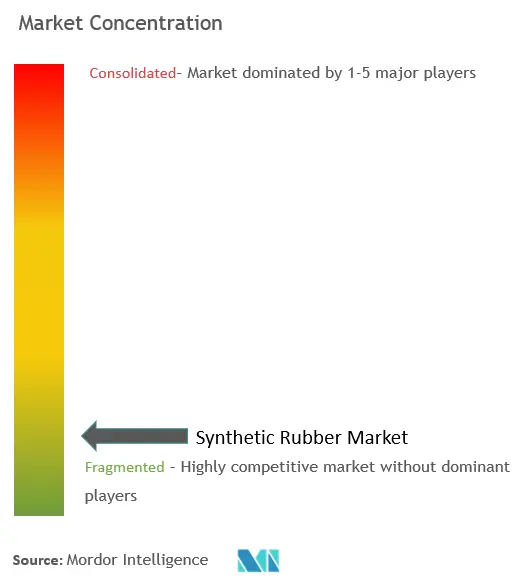Top Companies in Synthetic Rubber Market
This report lists the top Synthetic Rubber companies based on the 2023 & 2024 market share reports. Mordor Intelligence expert advisors conducted extensive research and identified these brands to be the leaders in the Synthetic Rubber industry.
-
Kumho Petrochemical
-
Saudi Arabian Oil Co.
-
TSRC
-
Exxon Mobil Corporation
-
China Petrochemical Corporation
*Disclaimer: Top companies sorted in no particular order

Synthetic RubberMarket Concentration

Synthetic RubberCompany List
-
Apcotex
-
China Petrochemical Corporation
-
ENEOS Corporation
-
Exxon Mobil Corporation
-
Kumho Petrochemical
-
LANXESS
-
LG Chem
-
Mitsubishi Chemical Corporation
-
Reliance Industries Limited
-
SABIC
-
Saudi Arabian Oil Co.
-
SIBUR
-
Synthos
-
The Goodyear Tire & Rubber Company
-
TSRC
-
Versalis S.p.A.
-
Dow
Specific to Synthetic Rubber Market
Competitive Landscape Report Includes
Company Profiles (includes Global Level Overview, Market Level Overview, Core Business Segments, Financials, Headcount, Key Information, Market Rank, Market Share, Products and Services, and Analysis of Recent Developments). Key Strategic Moves, Market Share Analysis, Company Landscape, and List of Companies.
Synthetic Rubber Market Companies Summary
The synthetic rubber market is characterized by the presence of several key players. These enterprises contribute significantly to the market's growth and development. They engage in various strategies such as mergers, acquisitions, partnerships, and product innovations to maintain their market positions and expand their customer base. These corporations play a vital role in the production and supply of synthetic rubber across the globe. One of the primary drivers of the synthetic rubber market is the increasing demand from the tire and tire components segment. This demand is primarily driven by the tire manufacturing industry, where synthetic rubber is a material of choice due to its durability and wear resistance. Additionally, the market's growth is expected to be helped by the increasing production of electric vehicles. However, the use of alternatives such as polyurethanes in some applications may hinder the market's growth. Despite these challenges, future opportunities could arise from the development of bio-based feedstock for synthetic rubber and the growing demand for medical gloves.
Explore MoreSynthetic Rubber Companies - Table of Contents
-
1. COMPETITIVE LANDSCAPE
-
1.1 Mergers and Acquisitions, Joint Ventures, Collaborations, and Agreements
-
1.2 Market Share (%)**/Ranking Analysis
-
1.3 Strategies Adopted by Leading Players
-
1.4 Company Profiles
-
1.4.1 Apcotex
-
1.4.2 China Petrochemical Corporation
-
1.4.3 ENEOS Corporation
-
1.4.4 Exxon Mobil Corporation
-
1.4.5 Kumho Petrochemical
-
1.4.6 LANXESS
-
1.4.7 LG Chem
-
1.4.8 Mitsubishi Chemical Corporation
-
1.4.9 Reliance Industries Limited
-
1.4.10 SABIC
-
1.4.11 Saudi Arabian Oil Co.
-
1.4.12 SIBUR
-
1.4.13 Synthos
-
1.4.14 The Goodyear Tire & Rubber Company
-
1.4.15 TSRC
-
1.4.16 Versalis S.p.A.
-
1.4.17 Dow
-
- *List Not Exhaustive
-
Synthetic Rubber Companies FAQs
Who are the key players in Synthetic Rubber Market?
Kumho Petrochemical, Saudi Arabian Oil Co., TSRC, Exxon Mobil Corporation and China Petrochemical Corporation are the major companies operating in the Synthetic Rubber Market.

